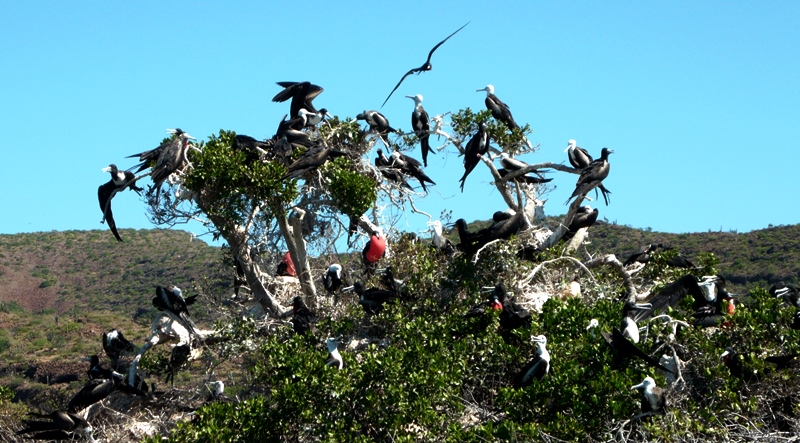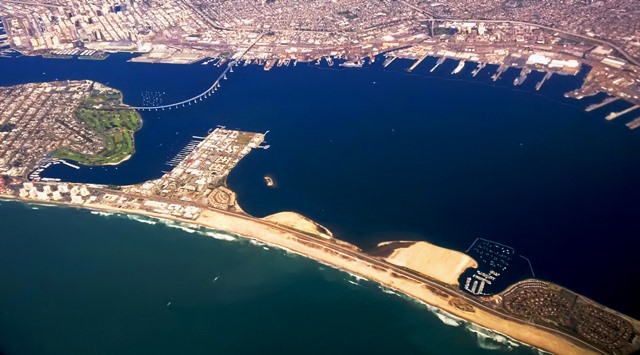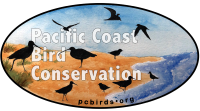Our Partners

Migratory birds, and even populations that disperse over short distances, often require diverse habitats over seasons, spanning across jurisdictions, political boundaries, and international borders. Successful conservation requires long-lasting collaborations to protect their habitat, the resources required for foraging, roosting and nesting, and areas that provide safety from disturbance, pollution, and unnatural depredation or mortality. We thank our partners, collaborators, donors, and dedicated communities who make conservation possible through habitat stewardship and enhancement, sustainable use of land and resources, beneficial regulations, support for our programs, and commitment to high-quality research, monitoring, and outreach.
About our partners
- Our San Diego Zoo Global family
- Our key sites and program support
- Funding
- Captive-rearing and wildlife rehabilitation
- Collaborations

Our San Diego Zoo Global family
Based in southern California, San Diego Zoo Global is a not-for-profit organization that operates the San Diego Zoo, the SDZ Safari Park, the SDZ Institute for Conservation Research, and the SDZ Global Wildlife Conservancy. The world-renowned conservation, education, and research work done through San Diego Zoo Global

Our key sites and program support
U.S. Department of Defense and Department of the Navy
The Natural Resources Program of the U.S. Department of Defense includes guidelines for managing natural resources on military-owned or operated land, airspace and water bodies spanning millions of acres. Following the amendment of the Sikes Act that outlined that DoD develops and implements Integrated Natural Resources Management Plans (INRMPs), each military installation with significant resources is required to implement these Plans, which are founded on principles of adaptive ecosystem management. Initiatives such as the DoD Partners in Flight program for working military lands also includes supporting bird monitoring, management, education, and conservation.
The U.S. Navy, under DoD, manages nearly three million acres of land, which have become critical undeveloped habitat for diverse wildlife as urban populations have grown in the surrounding areas. Many of these species include federal or state-listed threatened and endangered species. Under the Endangered Species Act of 1973, the Navy creates and enforces long-term, wildlife-focused plans to ensure the protection of this sensitive habitat while performing military training and operations. To accomplish this, the Navy includes biologists on staff within military installations, and collaborates and consults with agencies and external conservation entities. In California, the San Diego Zoo Institute for Conservation Research supports research and monitoring for recovery of listed species on military lands.
Naval Base Coronado and Marine Corps Base Camp Pendleton contract field researchers from the Pacific Coast Bird Conservation Program at SDZ-ICR to monitor endangered California Least Tern and threatened Western Snowy Plover populations on multiple Base-operated beach sites. Efforts include conducting research to support adaptive management, making recommendations to aid recovery, and supporting outreach activities and site enhancement strategies.
Marine Corps Base Camp Pendleton (MCBCP) occupies over seventeen miles of primarily undeveloped coastline in northwestern San Diego County. This vast area provides an ecological buffer between heavily populated areas that border the Base to the north and south. The diverse ecosystems within the Base provide vital habitat to over 1,100 species, which includes 18 federally listed threatened and endangered species. In southwestern San Diego County, Naval Base Coronado (NBC) includes installations with coastline along the Pacific Ocean and San Diego Bay, and management efforts have included habitat creation and enhancement for listed species, including California Least Terns and Western Snowy Plovers. In addition to implementing monitoring programs, conservation efforts for these species and site enhancement strategies at these installations have included coordination of site use schedules and mitigation strategies to reduce wildlife-human conflict whenever possible, vegetation management, control and removal of invasive species, dune and beach restoration, predator and raptor monitoring, and environmental education.

More to come soon!
We will continue building our page – thank you for visiting!
